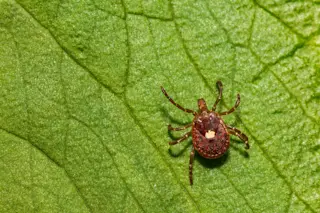A single bite from a tick can cause a permanent allergy to pork, beef and other kinds of red meat.
This condition is increasing in the United States, with a jump in positive test cases from 2017 to 2021, according to the U.S. Centers for Disease Control and Prevention (CDC). According to the CDC, as many as 450,000 people in the U.S. have been estimated to have been infected with alpha-gal syndrome, which can cause an assortment of symptoms when they eat red meat.
The connection between a tick bite and a meat allergy might seem baffling at first. How is it possible that a bite from such a small creature can ruin a lifetime of barbecues? Scientists suspect that it has to do with special sugar molecules found in lone star tick saliva, which humans don’t carry — but most other mammals do.
The range of the lone star ...















